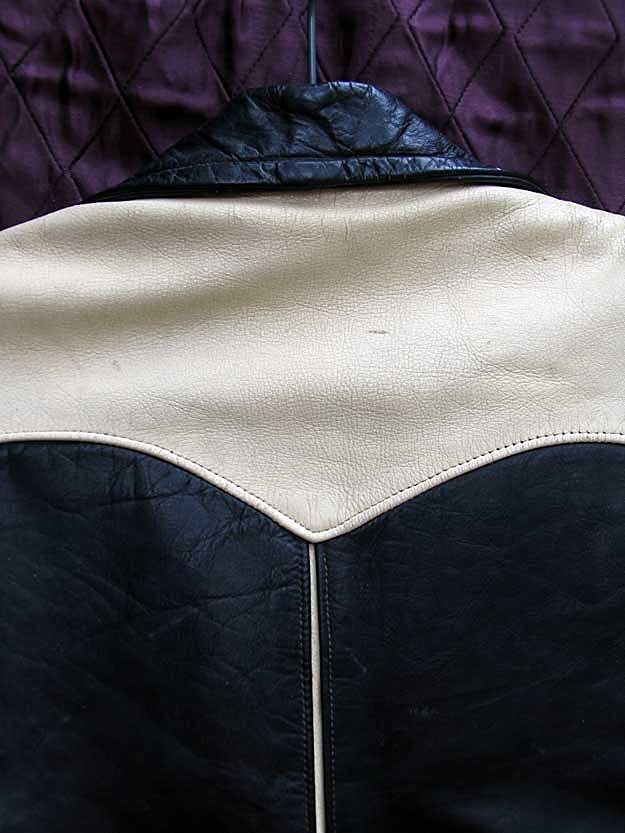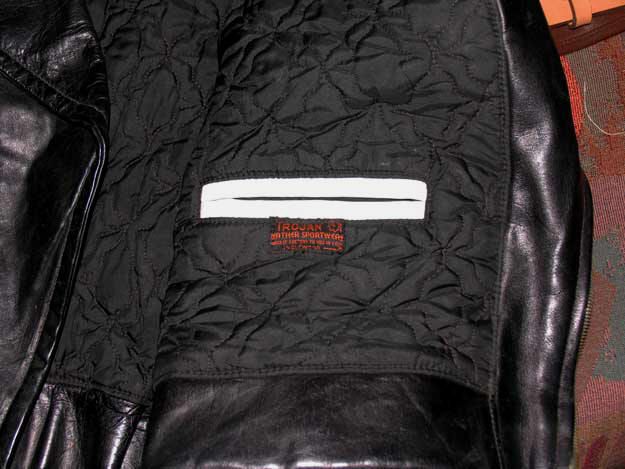Want to buy or sell something? Check the classifieds
-
The Fedora Lounge is supported in part by commission earning affiliate links sitewide. Please support us by using them. You may learn more here.
You are using an out of date browser. It may not display this or other websites correctly.
You should upgrade or use an alternative browser.
You should upgrade or use an alternative browser.
Eastman - a new direction?
- Thread starter Edward
- Start date
Never been a fan of multiple panel backs .... can see the appeal from a styling perspective but just doesn't do it for me. A bit like multi colour e.g. black and brown ... I think both are sort of marmite things. Some of it may be legacy issues from my motorcycle days when seams were the "weak points" in jackets ....
From research I don't believe that the multi panel back thing was prevailant as a feature in the early 20th century e.g The menlo and associated jackets didn't have multi panel backs. If you look through the various publications there are as many if not more from the early part of the 20th century which had one piece backs e.g. Simmonds Bild, Duroval, leathertogs. Certainly some of the "catalogue" jackets of the 1930's had multi panels as did many childrens jackets ( I suspect to keep costs down) e.g. Hercules, Montgomery Ward but just as many had one piece backs above the halfbelt or even single piece backs without the halfbelt. As far as I can assertain a one piece back has always attracted a higher "value" or perhaps "quality" than a multi piece back with the exception of functional designs e.g. bi-swing back ..... even though the complexity of manufacture is greater on the multi-panel jackets.
There seems to have been a period when rather than a bi-swing back jackets had a single pleat down the middle of the back panel on the jacket ( mid-1930's ) but this seemed to have been a short lived feature and the bi-swing became the flexible offering. It should also be noted that multi panel backs were not an exclusive feature of the 1920's and 1930's indeed many of the top quality manufacturers have produced multi panel backs at many points in their history right into the 50's and beyond e.g. Langlitz "cascade" or the Trojan "401".
HTH
From research I don't believe that the multi panel back thing was prevailant as a feature in the early 20th century e.g The menlo and associated jackets didn't have multi panel backs. If you look through the various publications there are as many if not more from the early part of the 20th century which had one piece backs e.g. Simmonds Bild, Duroval, leathertogs. Certainly some of the "catalogue" jackets of the 1930's had multi panels as did many childrens jackets ( I suspect to keep costs down) e.g. Hercules, Montgomery Ward but just as many had one piece backs above the halfbelt or even single piece backs without the halfbelt. As far as I can assertain a one piece back has always attracted a higher "value" or perhaps "quality" than a multi piece back with the exception of functional designs e.g. bi-swing back ..... even though the complexity of manufacture is greater on the multi-panel jackets.
There seems to have been a period when rather than a bi-swing back jackets had a single pleat down the middle of the back panel on the jacket ( mid-1930's ) but this seemed to have been a short lived feature and the bi-swing became the flexible offering. It should also be noted that multi panel backs were not an exclusive feature of the 1920's and 1930's indeed many of the top quality manufacturers have produced multi panel backs at many points in their history right into the 50's and beyond e.g. Langlitz "cascade" or the Trojan "401".
HTH
I was told by a number of reputable players in the industry it's because you don't need such big panels of leather without marks, scars etc ..... and the seam becomes the "weak point" in the panel. It also means that utilisation of a fixed square footage of hide is less and thus the hide cost portion of a jacket goes up whereas the relative increase in assembly cost is not really changed at all.
WEhile I'm sure this was valid in the "old days" I'm not sure the same applies in the modern day as it appears that Aero / Eastman / BK et al are not utilising scraps but rather cutting up a large panel into component pieces and stitching it back together ... which other than the asthetic ... sort of defeats the purpose
I could be wrong but that's just how it appears ..... seems a fashion thing rather than a function thing IMHO
WEhile I'm sure this was valid in the "old days" I'm not sure the same applies in the modern day as it appears that Aero / Eastman / BK et al are not utilising scraps but rather cutting up a large panel into component pieces and stitching it back together ... which other than the asthetic ... sort of defeats the purpose
I could be wrong but that's just how it appears ..... seems a fashion thing rather than a function thing IMHO
pauleway
Practically Family
- Messages
- 655
- Location
- Western NY
Featured products
-
 John Lofgren Monkey Boots Shinki Horsebuttt - $1,136 The classic monkey boot silhouette in an incredibly rich Shinki russet horse leather.
John Lofgren Monkey Boots Shinki Horsebuttt - $1,136 The classic monkey boot silhouette in an incredibly rich Shinki russet horse leather. -
 Grant Stone Diesel Boot Dark Olive Chromexcel - $395 Goodyear welted, Horween Chromexcel, classic good looks.
Grant Stone Diesel Boot Dark Olive Chromexcel - $395 Goodyear welted, Horween Chromexcel, classic good looks. -
 Schott 568 Vandals Jacket - $1,250 The classic Perfecto motorcycle jacket, in a very special limited-edition Schott double rider style.
Schott 568 Vandals Jacket - $1,250 The classic Perfecto motorcycle jacket, in a very special limited-edition Schott double rider style.
ProteinNerd
My Mail is Forwarded Here
- Messages
- 3,919
- Location
- Sydney
pauleway said:Whatever the consensus is about that Da--ed middle seam, that IS one nice looking jacket!!
Despite my criticism of the back, your right, it is a damn nice jacket.
I used to own an original Trojan bike jacket. Black with a Police badge holder. The back seam is constructed as an additional articulation point. Difficult to say whether that was a weak point as I never crashed in it !
I didn't have a camera at the time so these is the best images I've found. Stuart Clurman's photos of a 1950s Trojan Panda




http://www.lostworldsinc.com/Trojan_Night_Rider_Motorcycle_Jacket.htm
I didn't have a camera at the time so these is the best images I've found. Stuart Clurman's photos of a 1950s Trojan Panda




http://www.lostworldsinc.com/Trojan_Night_Rider_Motorcycle_Jacket.htm
Last edited:
Similar threads
- Replies
- 29
- Views
- 3K
- Replies
- 13
- Views
- 6K
Members online
- photo2u
- DweezilMac
- shopkin
- cbez
- zebedee
- Buick
- LeilaniXamira
- Mister Rivets
- mayserwegener
- Fading Fast
- tweedydon
- Aceyvr
- Quadrapop
- Aloysius
- LucherB78
- the_imperialist
- Herrvallmo
- Madhouse27
- Authenticstyle
- El Marro
- Ent
- Standpat piper
- ChienChilla
- mmcsee
- Bdaycoco
- dinhnguyen57
- jimboyogi
- Delrey486
- jeffgarf
- Alabama Blacksmith
- baldfront
- JB1
- Retserrof
Total: 3,068 (members: 40, guests: 3,028)
